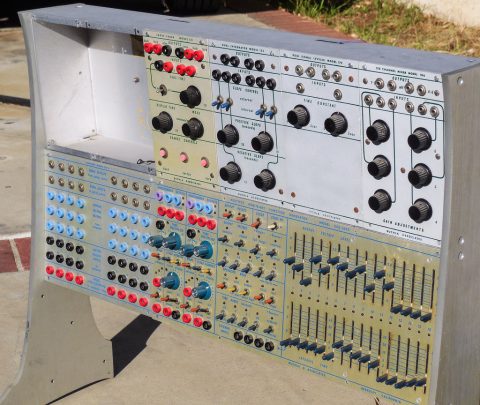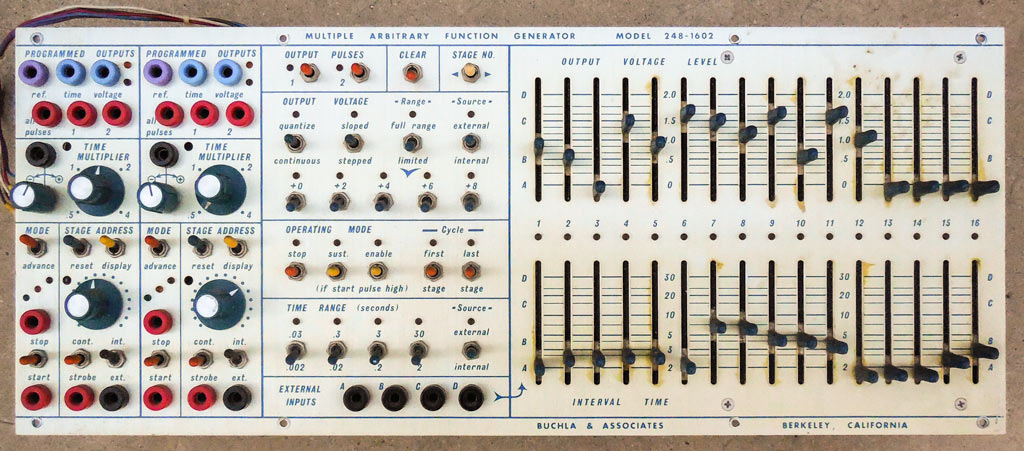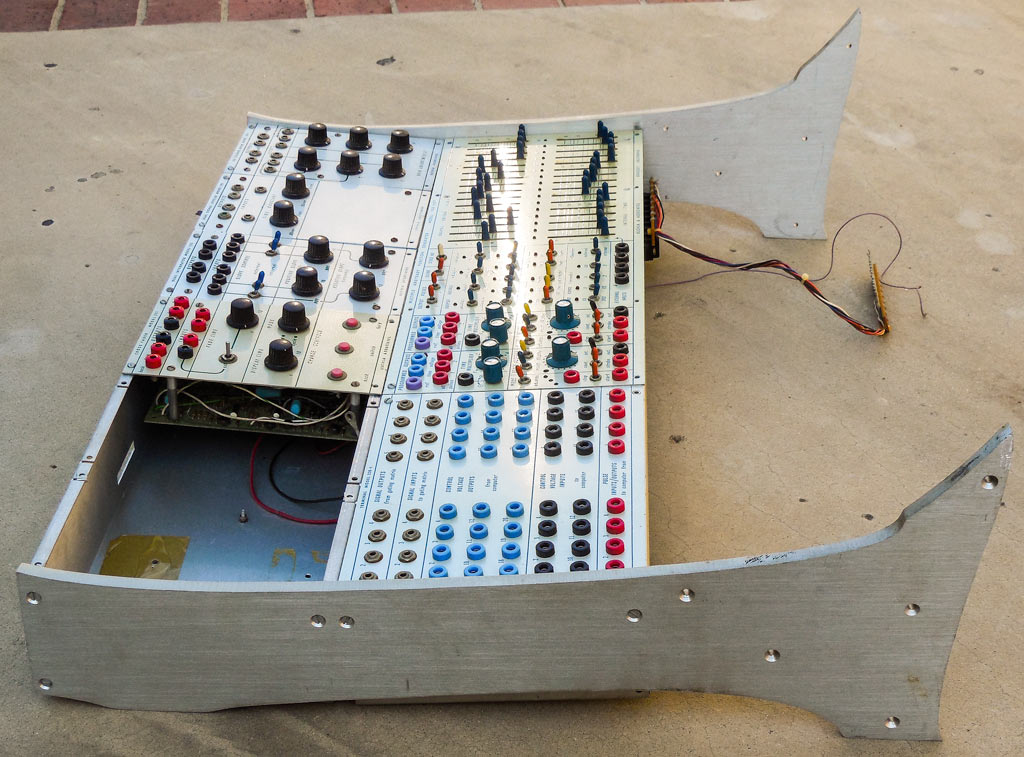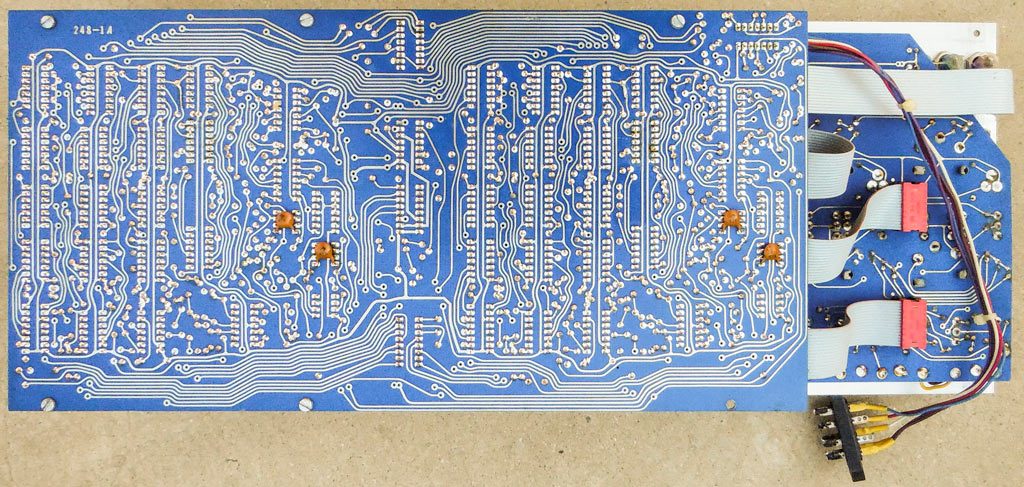This is the story of the one that got away. I had it, but let it go. Fortunately, it’s going to end up in some excellent hands.
I worked at Sequential Circuits in San Jose, California in the mid to late 80s. Buchla Associates was in Berkeley, California, a bit north of us. While I was at Sequential, we briefly considered licensing the technology in the Buchla 400 (more details in my Story of the Prophet VS), and I was the one who spent the most time learning the beast. I also had some interactions with Don Buchla about MIDI, as I was the technical chairman of the MIDI Manufacturers Association on and off through the mid-90s.
Through these connections, I was made aware of one of Buchla’s occasional “garage sales.” Although I had learned synthesis on modulars in the late 70s, it was all East Coast Synthesis; I had never used a Buchla outside of the 400. It so happens there was a small assortment of modules and cases available at the sale I attended, so I snatched a few of them up (even though I was broke; I remember I wrote a check against my credit card), honestly not fully understanding what they were – I assumed I would figure them out later when I fleshed out the system. Here’s what I bought (all Buchla photos courtesy of Richard Bugg):

This odd collection of modules eclectic system went unused while I pursed a different direction in music through the ensemble Alias Zone – my role was that of percussionist, using a combination of mostly rhythmic sample loops processed live-dub style remixes through a rotating line-up of modular or semi-modular synths plus racks of processing gear.
After a decade of neglect, I decided the Buchla should go to someone who had a better chance of using it, so in the late 90s(?) I brought it over to the studio of band mate and tech extraordinaire Richard Bugg, who still had classic Moog and E-mu modular systems. Richard’s music is featured on the PAiA flexi disc demo record back in the mid 70s, which contributed to me buying a PAiA modular as my first synth. Indeed, some movements from his composition Epsilon Boötis on that disc sounded in sections like it would have been right at home being performed on a Buchla:
In exchange, Richard handed me a Steinberger XL2 bass that he had used while at Gibson – it was the development platform for active electronics he created for the short-lived Gibson 2020 bass. I had played bass back in the 80s, but no longer had my guitars, so I thought it was a good trade. (I know a number of you are already wincing. Hey, who can predict the future? I did end up using it for the intro to one track on the Alias Zone album, and it’s not exactly gone down in value in the meantime…)
Flash forward to Knobcon 2016 this past September, and a conversation with Mark Verbos at his booth during the show. Some may know Mark as a hard techno musician; some may know him for his excellent Verbos Electronics Eurorack modules. Well, he is also known as a top-notch Buchla tech. The conversation somehow turned to MArFs, and he mentioned there might have been only eight or so ever made (Paul Schreiber of Synthesis Technology claims six). I responded that I knew where one of them was, as I owned it for a period of time; Mark became “interested” (tragically cool understatement) in getting access to that unit. Here are some more images of it, for those who like circuit board porn:
I connected Richard and Mark, with the result being that this odd lot of classic modules will soon be in Mark’s possession. During the email exchanges, Mark noted that the MArF wasn’t even the rarest module in the set; he referred to the Model 155 Dual Integrator as a “white elephant” and noted that he hadn’t even seen one before (apparently one – as well as a 106, 172, and even a 321 slide crossfader – were part of the original San Francisco Tape Music Center system). For those who are curious to see what an actual Buchla Model 100 module and circuit board looks like:
Do I regret letting go of these modules? Part of me says “of course I do!” – but that’s just the emotional response of a collector. In truth, I hadn’t used them and probably would still not have used them. They also probably don’t work anymore, and need the careful ministrations of a specialized Buchla tech like Mark. And Mark probably will use them – or at least give them a chance to stretch their legs, after decades of disuse. So a larger part of me is happy that this story has had this conclusion.
Meanwhile, time to get back to my current system, which I have been using:







Chris: I was standing next to you filming that great conversation. Send me an email about it.
While I was a student at The Evergreen State College in Olympia WA, the school has a Buchla synth, with Marf. I have no idea what happened to it, I left in 1986. I had some great times playing and learning that instrument.
Holy cow I have a MArF – didn’t know they were that rare. My buddy did a Youtube video of me being reckless with one. Simply called “The Buchla Music Box.” Great article !